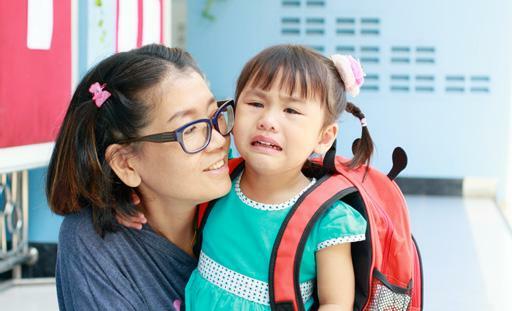
2 minute read
[New] Surviving separation anxiety
By Dorothy Lepkowska
It’s a common scenario; the toddler who actively resists being left with anyone else, struggling to separate from parents or loved ones. So what can you do to make separating from your toddler easier?
Advertisement

Most children go through a phase of being overly attached to one or both parents at some point in their early years. The tears can make leaving them at nursery or with a childminder heart breaking.
Kate Harding’s toddler would cling to her every morning when they arrived at nursery. ‘She wasn’t upset when she woke up in the morning or even in the car as we drove to her early years setting but once it was time for me to leave it was the same every day’ Kate says. ‘She would cling to my leg and literally have to be peeled off by one of the staff. Often I’d leave upset and in tears myself. On those days, no amount of reassurance from her key person that she was well and thriving would make me feel better.’
Important for resilience
Experts say that it’s completely normal for young children to go through what could be described as a clingy phase and it’s an important part of their development.
For many, anxiety at being separated from a parent begins at six to nine months. It’s around this time that babies become conscious that they are separate little beings and are not the same person as their parent.
For some, this clinginess can last for a couple of years or more and can get worse when they go to nursery or a childminder.
As difficult as it is to be separated from a crying, anxious child, it’s best not to avoid leaving them. Explaining why you need to be apart, saying goodbye, telling them when you will be back and reinforcing the positives of this, is all part of teaching your child how to be resilient.
Take a deep breath and walk away. Your child is in safe hands and will thrive, as they will discover for themselves over time.
Kate says: ‘I would tell my daughter that I had to go to work so we had money and remind her how much fun it would be to play with her friends. Often this did the trick.’
Dorothy Lepkowska is an award-winning journalist, author and freelance writer for the Early Years Alliance (www. eyalliance.org.uk). You can read more of her parenting features at www.familycorner.co.uk
Getting used to new surroundings
Nurseries and pre-school settings understand the importance of a settling-in period before your child starts officially. You might stay with your child for several sessions, gradually leaving them for longer periods. Your child’s key person will work with you to settle your child. This helps them get used to their new surroundings and helps you both become familiar with the staff and children.
Remember, this is all new for your child so it’s not surprising they might feel uncertain or anxious.
‘I always tried not to sneak out of the nursery when leaving’ says Kate, ‘but to give her a kiss, wish her a good day and wave through the window. At times it was hard to stay calm and collected while she was upset but as she got to know the routine the crying stopped. In any event, even at her worst, the staff always assured me that she calmed down once I’d gone and got on with the day’s activities. It was probably worse for me, in fact!’

![[New] Shared reading and language development](https://assets.isu.pub/document-structure/230102101010-4b3fb7fcc9d32a7184b8ba464217a491/v1/060735bd3c48c83ab4efe37759b3c096.jpeg)







